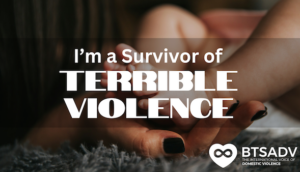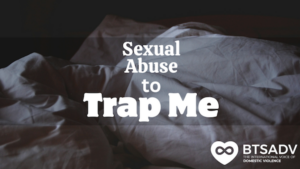By Jenn Rockefeller
It is not gender specific. It can happen to men, women and non-binary victims of domestic violence. It can happen at any time within relationships. It doesn’t discriminate – it can happen to the rich or poor, and to all those with differing racial backgrounds. What is “it?” It’s called reproductive coercion and it can have severe adverse effects on its victims.
What it is
According to the American College of Obstetrics and Gynecologists, reproductive coercion is “behavior intended to maintain power and control in a relationship related to reproductive health by someone who is, was, or wishes to be involved in an intimate or dating relationship with an adult or adolescent.”
More specifically, reproductive coercion is a form of sexual abuse that is not widely talked about because many people are unaware it even exists. People may have heard stories about the nightmarish occurrences when one partner pokes holes in condoms or when one partner commits an act of rape. But what these individuals likely did not know is that there is a name for those acts of intimate partner violence.
What it can look like
Reproductive coercion can take on many forms, such as interfering with contraception use that can end up in pregnancy. Please note that any person can be the instigator. If you answer yes to any of the below questions, you might be a victim of reproductive coercion.
- Has your partner hidden, destroyed or withheld your oral contraception?
- Has your partner removed the condom during sex?
- Has your partner poked holes in the condoms in order to result in a pregnancy?
- Has your partner pressured you into having children?
- Has your partner threatened violence against you if you do not agree to become pregnant?
- Has your partner continually hounded you to have sex?
- Has your partner threatened violence against you if you did not comply with terminating or continuing a pregnancy?
Statistics
According to the National Domestic Violence Hotline, a national study in 2011 determined that one in four callers reported being reproductively coerced. However, a more recent report released in October 2018 by the Institute for Women’s Policy Research (IWPR), indicated that one in 10 (40%) survivors reported reproductive coercion by either tampering with contraception or forcing them into becoming pregnant. Of that 40% who reported coercion, 84% became pregnant as a result. Furthermore, if a woman becomes pregnant due to reproductive coercion, it can severely hinder her options for financial independence, as well as educational or work opportunities.
How it’s used for control
Domestic violence is an imbalance of power in a relationship. As such, the primary aggressor will exhibit any kind of behavior to maintain that power and control over their partner. This can include becoming pregnant on purpose to trap the partner into staying in the relationship, or if the relationship did end eventually, the one partner would be in the primary aggressor’s life forever. The abuser can and will use the children as pawns for ongoing abuse aimed at the victim/survivor.
Even if no pregnancy occurs as a result of the reproductive coercion, there are still many ways that abusers can use coercive tactics to their advantage in order to maintain power and control over the victim. Violence and threats of violence are sometimes enough to get a victim to comply. There are already enough ways that abusers can covertly abuse their victims, and reproductive coercion is just another tactic in their arsenal.
As humans, it is our right to decide what is best for our bodies and our reproductive health. When abusers force us to give up that right, we are subjected to yet another form of domestic violence that ends up resulting in great harm to our mental, emotional and/or physical health.
If you or someone you know is in an abusive relationship, there is help. You can visit the Break the Silence website at www.breakthesilencedv.org or chat with one of our helpline advocates at 855-287-1777.









